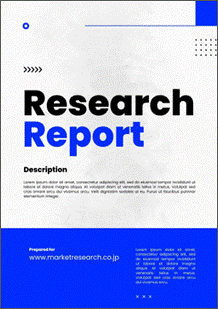 | • レポートコード:D0-MOR-AP0219 • 出版社/出版日:Mordor Intelligence / 2020年4月20日 • レポート形態:英文、PDF、110ページ • 納品方法:Eメール(受注後2-3営業日) • 産業分類:健康管理 |
| Single User | ¥629,000 (USD4,250) | ▷ お問い合わせ |
| Team User | ¥703,000 (USD4,750) | ▷ お問い合わせ |
| Corporate License | ¥1,110,000 (USD7,500) | ▷ お問い合わせ |
• お支払方法:銀行振込(納品後、ご請求書送付)
レポート概要
| 本調査レポートは、細胞療法の世界市場について調査・分析した資料で、細胞療法の市場概要、動向、セグメント別市場規模、地域別分析、競争状況、企業情報、市場機会分析などで構成されています。 |
The cell therapy market will show rapid growth due to the increasing prevalence of chronic conditions, rising adoption of regenerative medicine and rise in the number of clinical studies pertaining to the development of cellular therapies.
Chronic diseases and conditions are on the rise worldwide. According to the World Health Organization, chronic disease prevalence is expected to rise by 57% by the year 2020. The emerging markets will be hardest hit, as population growth is anticipated be most significant in developing nations. Increased demand for healthcare systems due to chronic disease has thus become a major concern. Healthcare expenditures greatly increase, with each additional chronic condition with greater specialist physician access, emergency department presentations and hospital admissions.
Therefore the increasing prevalence of chronic conditions, government assistance and numerous companies investing heavily in stem cell therapy research and development will help to stimulate the industry growth. The proven effectiveness of cell therapy products coupled with increasingly favorable guidelines pertaining to cell therapy research and manufacturing should positively impact industry growth.
Key Market Trends
Allogeneic Therapies Segment Accounted for the Largest Share in the Cell Therapy Market
Allogeneic therapies rely on a single source of cells to treat many patients. They increase the risk of eliciting an immune response within a patient, and immunosuppressive therapies are sometimes administered in combination with allogeneic products. Therefore there is an increasing inclination of physicians towards therapeutic use of allogeneic therapies coupled with rising awareness about the use of cord cells and tissues across various therapeutic areas is driving revenue generation.
Furthermore, the presence of a substantial number of approved products for clinical use has led to the large revenue share of this segment.
North America is Leading the Cell Therapy Market
North America is estimated to retain the largest share of the market due to the presence of strong regulatory framework in order to promote cellular therapy development, the existence of industry bigshots, and high cost of therapies in the U.S. There is also the presence of leading universities that supports the research activities in the U.S. is one of the key factor driving the market for cell therapy in North America.
The Asia Pacific market is also increasing at a rapid rate due to the availability of therapies at lower prices coupled with growing awareness among the healthcare entities and patients pertaining the potential of these therapies in chronic disease management.
Competitive Landscape
There has been a presence of a considerable number of companies that are collaborating with the blood centres and plasma collection centres in order to obtain cells for use in therapeutics development. These companies in partnership with blood banks and plasma banks are working together towards the advancement in the cell therapy market.
Reasons to Purchase this report:
– The market estimate (ME) sheet in Excel format
– 3 months of analyst support
1 INTRODUCTION
1.1 Study Deliverables
1.2 Study Assumptions
1.3 Scope of the Study
2 RESEARCH METHODOLOGY
3 EXECUTIVE SUMMARY
4 MARKET DYNAMICS
4.1 Market Overview
4.2 Market Drivers
4.2.1 Increasing Prevalence of Chronic Conditions
4.2.2 Rising Adoption of Regenerative Medicine
4.2.3 Rise in Number of Clinical Studies Pertaining to the Development of Cellular Therapies
4.3 Market Restraints
4.3.1 High Cost of Therapies
4.4 Porter’s Five Force Analysis
4.4.1 Threat of New Entrants
4.4.2 Bargaining Power of Buyers/Consumers
4.4.3 Bargaining Power of Suppliers
4.4.4 Threat of Substitute Products
4.4.5 Intensity of Competitive Rivalry
5 MARKET SEGMENTATION
5.1 By Type
5.1.1 Autologous
5.1.2 Allogeneic
5.2 By Therapy
5.2.1 Mesenchymal Stem Cell Therapy
5.2.2 Fibroblast Cell Therapy
5.2.3 Hematopoietic Stem Cell Therapy
5.2.4 Other Therapies
5.3 By Application
5.3.1 Musculoskeletal
5.3.2 Malignancies
5.3.3 Cardiovascular
5.3.4 Dermatology & Wounds
5.3.5 Other Applications
5.4 Geography
5.4.1 North America
5.4.1.1 United States
5.4.1.2 Canada
5.4.1.3 Mexico
5.4.2 Europe
5.4.2.1 Germany
5.4.2.2 United Kingdom
5.4.2.3 France
5.4.2.4 Italy
5.4.2.5 Spain
5.4.2.6 Rest of Europe
5.4.3 Asia-Pacific
5.4.3.1 China
5.4.3.2 Japan
5.4.3.3 India
5.4.3.4 Australia
5.4.3.5 South Korea
5.4.3.6 Rest of Asia-Pacific
5.4.4 Middle-East and Africa
5.4.4.1 GCC
5.4.4.2 South Africa
5.4.4.3 Rest of Middle East and Africa
5.4.5 South America
5.4.5.1 Brazil
5.4.5.2 Argentina
5.4.5.3 Rest of South America
6 COMPETITIVE LANDSCAPE
6.1 Company Profiles
6.1.1 Anterogen Co., Ltd.
6.1.2 Tego Science
6.1.3 Chiesi Farmaceutici S.p.A.
6.1.4 Corestem Inc.
6.1.5 Pharmicell Co Ltd.
6.1.6 Fibrocell Technologies Inc
6.1.7 Nipro Corp
6.1.8 MEDIPOST
6.1.9 TiGenix (Takeda Pharmaceuticals)
6.1.10 Stempeutics Research Pvt. Ltd.
7 MARKET OPPORTUNITIES AND FUTURE TRENDS